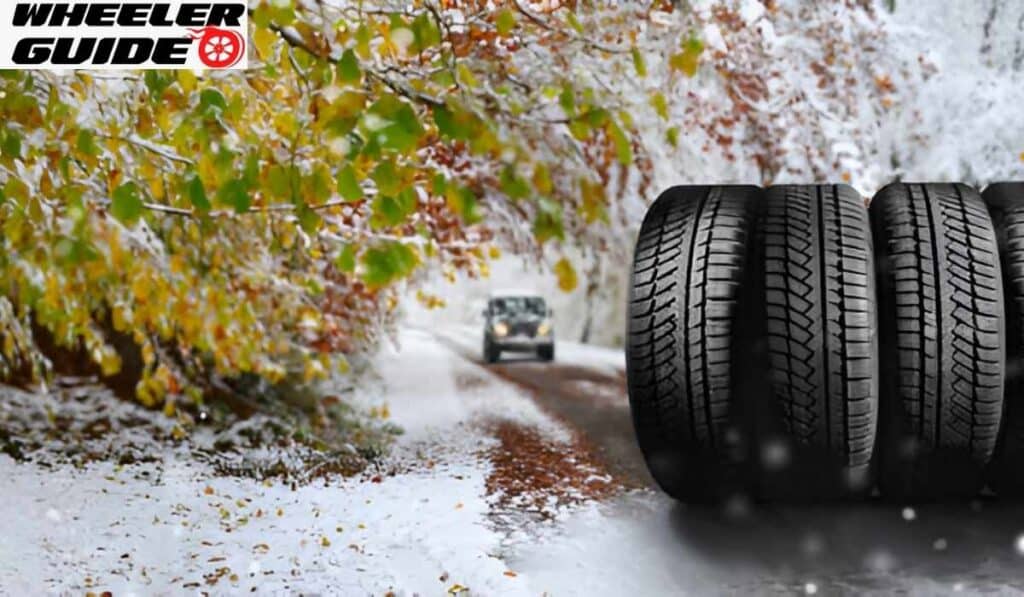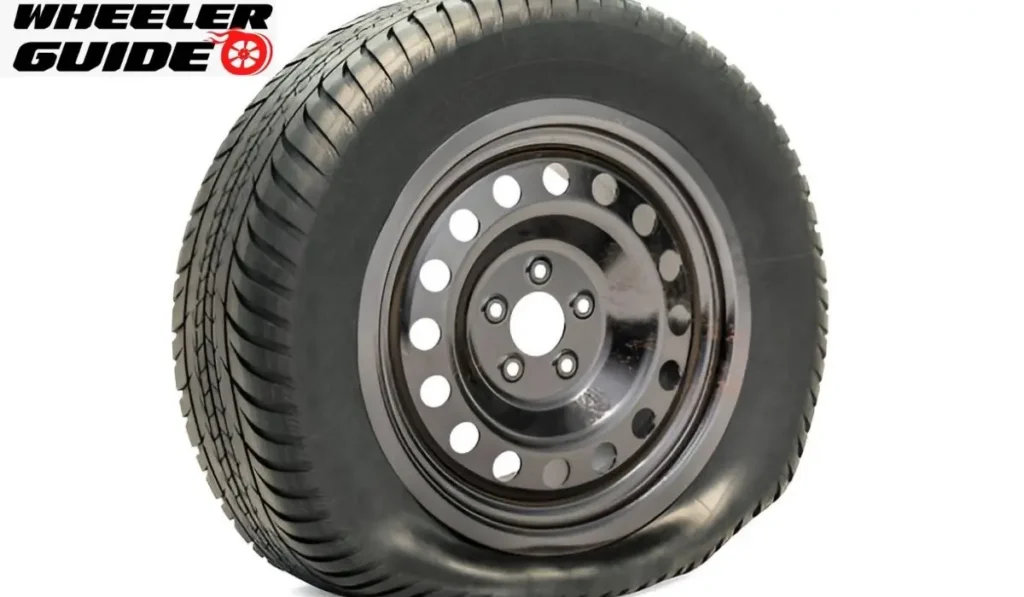All-season tires are a common preference for many drivers. They work well in different weather and road conditions. These tires aim to give good performance year-round.
All-season tires balance factors like noise, handling, grip, wear, and price. They offer a mix of features from summer and winter tires. This makes them a practical option for areas with mild weather changes.
Drivers who want tires that perform well in various conditions often pick all-season tires. They can handle light snow and rain, as well as dry roads. But they might not perform well in harsh weather. For those who live in areas with harsh winters or very hot summers, specialized tires might be a better fit.
Understanding All-Season Tires
All-season tires are a common preference for many drivers. They offer good performance in various conditions. These tires work well in different weather and road types.
Definition and Key Features
All-season tires are made to work in many weather conditions. They have special tread patterns and rubber compounds. These features help them grip the road in rain, light snow, and dry weather.
The tires have grooves to move water away. This stops hydroplaning. They also have small cuts called sipes. Sipes give extra grip on wet or snowy roads.
All-season tires last longer than other types. They work well in temperatures above 45°F (7°C). But they get hard and lose grip in very cold weather.
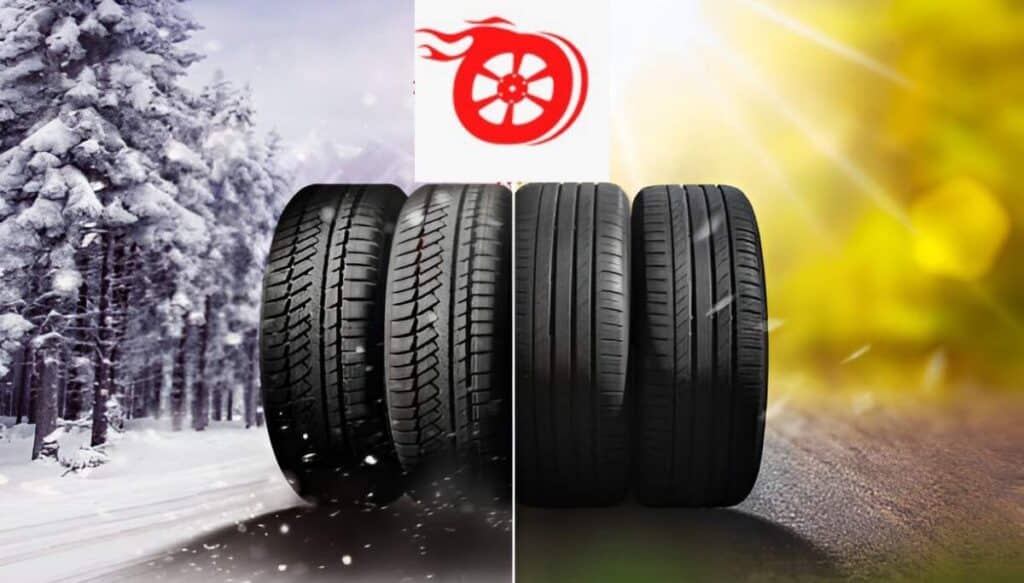
All-Season vs. All-Weather Tires
All-season and all-weather tires are not the same. This tires work best in mild climates. All-weather tires can handle more extreme conditions.
All-weather tires have the three-peak mountain snowflake symbol. This means they work well in snow. They stay soft in cold weather, giving a better grip.
All-season tires are good for places with little snow. All-weather tires are better for areas with more winter weather. They cost more but offer better performance year-round.
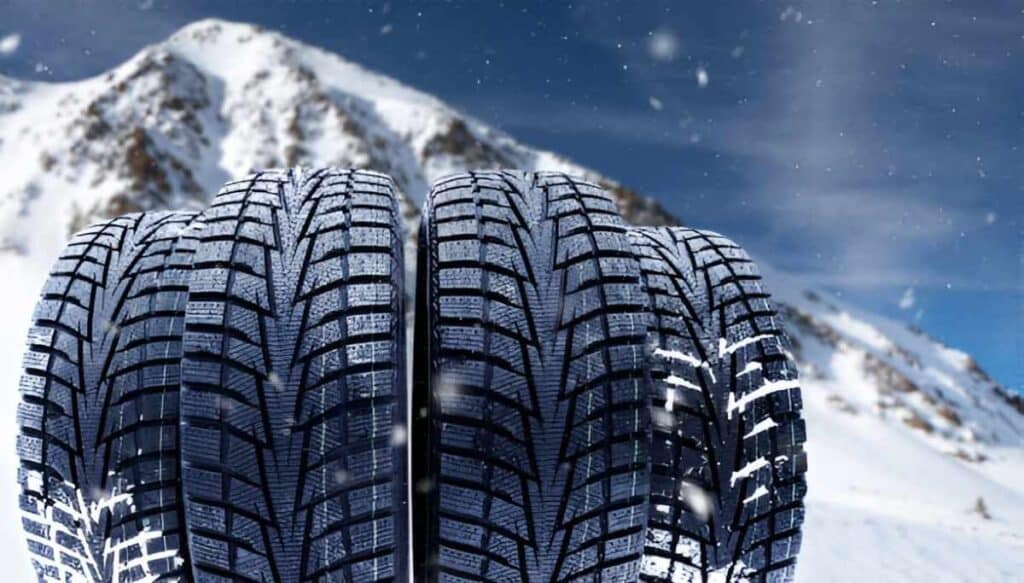
All-Season vs. All-Terrain Tires
All-season tires are made for regular roads. All-terrain tires are for both road and off-road use.
All-terrain tires have bigger tread blocks. This helps them grip mud and rocks. They make more noise on roads and use more fuel.
All-season tires are quieter and save fuel. They work well on paved roads and in light off-road conditions. But they can’t handle tough off-road paths.
Drivers should pick based on their needs. Those who mostly drive on roads should choose all-season tires. People who often go off-road need all-terrain tires.
Selecting the Right All-Season Tires
Choosing the best all-season tires involves considering tire size, tread design, and seasonal performance. These factors impact safety, comfort, and overall driving experience throughout the year.
Tire Size and Compatibility
Selecting the correct tire size is crucial for optimal performance. For example, all-season tires for a 2014 Elantra typically come in sizes like 205/55R16 or 215/45R17.
The tire size includes three main components:
- Width in millimeters
- Aspect ratio (sidewall height as a percentage of width)
- Rim diameter in inches
Drivers should consult their vehicle’s manual or door jamb sticker for the recommended tire size. Using the correct size ensures proper fit, accurate speedometer readings, and optimal handling.

Tread Design and Performance
Tread design plays a key role in tire performance. All-season tires feature specific patterns to handle various conditions.
Key tread design elements include:
- Circumferential grooves for water evacuation
- Siping for improved traction on wet and snowy roads
- Tread blocks for stability and handling
Innovative tread designs like Michelin’s CrossClimate2 offer enhanced performance in dry, wet, and winter conditions. The tread compound also affects grip and durability. Softer rubber compounds give better grip but tend to wear out more quickly.
Seasonal Considerations
All-season tires aim to perform well year-round, but some excel in specific conditions. Drivers should consider their local climate when choosing tires.
For areas with mild winters, standard all-season tires work well. In regions with harsh winters, all-weather tires offer better cold-weather performance. These tires carry the three-peak mountain snowflake symbol, indicating improved snow traction.
Seasonal performance varies among brands and models. Some prioritize dry handling, while others focus on wet traction or winter capabilities. Drivers should choose based on their most common driving conditions.
Best Practices for Maintenance
Taking good care of all-season tires helps them last longer and perform better. Regular checks and proper care keep you safe on the road and save money over time.
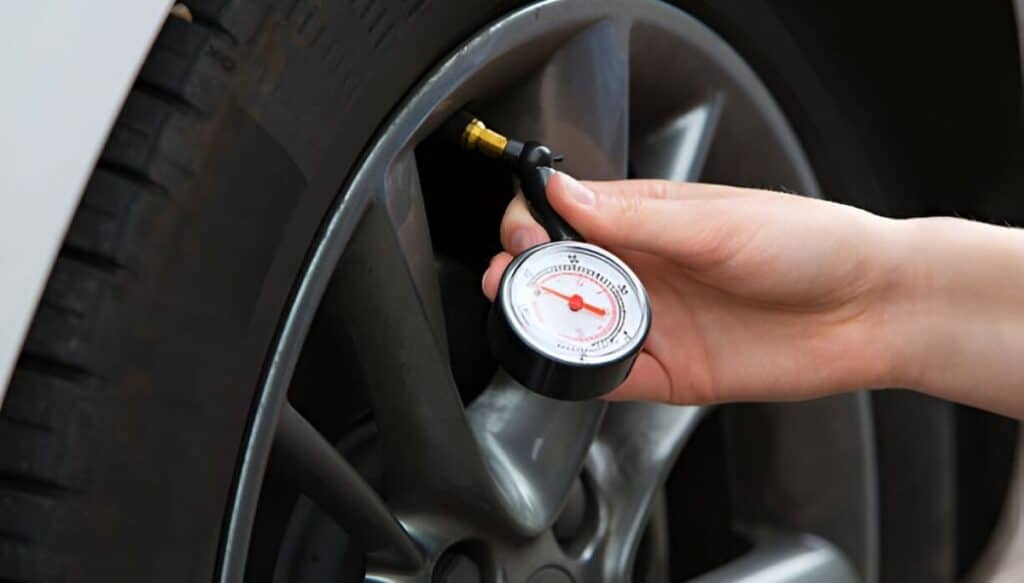
Checking Tire Pressure
Correct tire pressure is key for all-season tires. Check the pressure once a month and before long trips. Use a good quality tire gauge. Find the right pressure in your car’s manual or door jamb sticker.
Low pressure causes uneven wear and poor gas mileage. It can also lead to blowouts. Too much pressure makes the ride harsh and wears out the center of the tread faster.
Fill tires when they are cold for the most accurate reading. “Cold” means the car has been parked for at least 3 hours. Add or release air as needed to match the specs.
Understanding Wear and Tread Depth
Tread depth affects how well all-season tires grip the road. New tires have about 10/32 inches of tread. Change the tires when the tread wears down to 2/32 of an inch.
Check tread depth with a penny. Put Lincoln’s head into a groove. If you can see the top of his head, it means you need new tires.
Look for uneven wear. It can mean alignment issues. Cupping or scalloped edges point to worn shocks. Wear on one side suggests improper toe-in or camber.
Rotate tires every 5,000 to 8,000 miles. This helps the tires wear evenly and last longer. Follow the rotation pattern in your owner’s manual.
Top Picks and Recommendations
All-season tires provide versatile performance for various driving conditions. The best options balance traction, comfort, and durability across different vehicle types and price points.
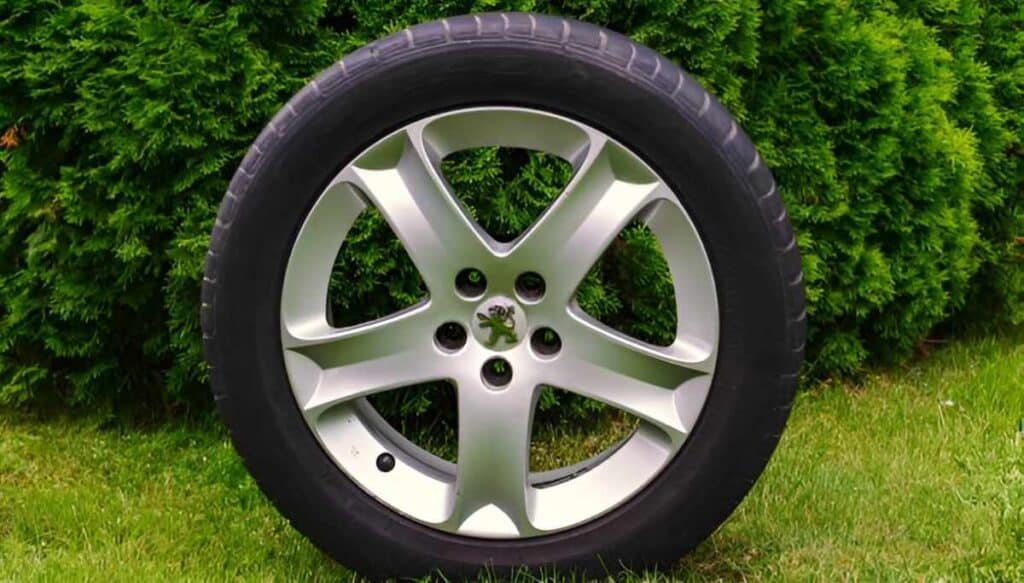
Top Rated All-Season Tires
Michelin CrossClimate2 tires are highly rated for their innovative design and all-season performance. These tires excel in dry, wet, and winter conditions.
Continental ExtremeContact DWS06 Plus tires are another top choice. They offer excellent handling and traction in diverse weather situations.
For drivers seeking reliable performance at a lower price point, the Sumitomo HTR A/S P03 tires provide good value.
Consumer Reports recommends several options based on extensive testing. Their top picks vary by vehicle type and specific performance needs.
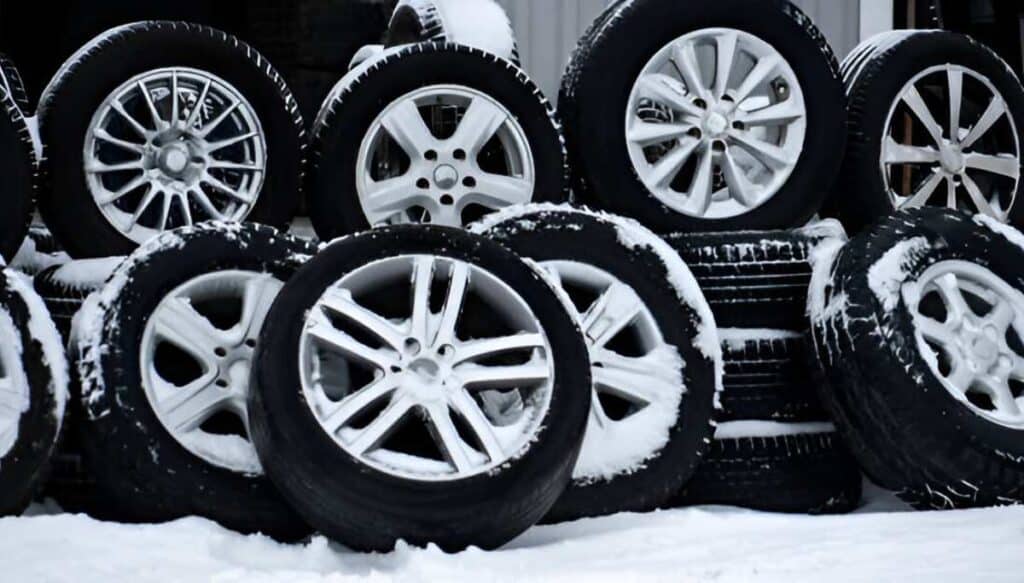
Best All-Season Tires for Different Vehicles
For cars, the Continental PureContact LS tires deliver a smooth ride and good traction.
SUV and truck owners might consider the Michelin Pilot Sport All Season 4 tires. These provide robust performance for larger vehicles.
Performance car enthusiasts often prefer the Goodyear Eagle F1 Asymmetric All-Season tires. They offer sporty handling without sacrificing all-season capabilities.
For compact cars, the Bridgestone Ecopia EP422 Plus tires balance fuel efficiency with all-season traction.
Affordable Options for Budget-Conscious Buyers
The Hankook Kinergy PT tires offer good value with durable tread life and reliable performance in various conditions.
Yamaha AVID Ascend LX tires provide a cost-effective option without compromising on quality. They deliver comfortable rides and decent traction.
General AltiMAX RT43 tires are another budget-friendly choice. These tires offer a good balance of performance and affordability for many vehicle types.
For those seeking the best deals, buying tires during major holidays or end-of-season sales can lead to significant savings.
Purchasing and Cost Considerations
Buying all-season tires involves timing, comparing prices, and understanding value. These factors can help you get the best deal on quality tires for your vehicle.
When to Purchase for the Best Deals
The best time to buy tires is often during major holidays or seasonal changes. Many retailers offer sales around Memorial Day, Labour Day, and Black Friday. Spring and fall are also good times to look for deals as stores clear out inventory.
Some stores have ongoing promotions. Walmart often has all-season clearance tires at discounted prices. Sam’s Club frequently offers member-only tire deals and installation packages.
It’s wise to shop around and compare prices from different sellers. Online retailers may have lower prices, but local shops might offer better service and installation deals.
Understanding Pricing and Value
Tire prices vary widely based on brand, size, and performance features. Continental all-season tires typically range from $100 to $300 per tire, depending on the model and size.
When considering cost, look at the price per mile. Divide the tire’s cost by its mileage warranty. This shows the true value over time. Cheaper tires may wear out faster, costing more in the long run.
Installation costs should be factored in. Some places offer free mounting and balancing with purchase. Others charge $15 to $45 per tire. Ask about additional fees like valve stems or disposal charges.
Quality tires can improve fuel efficiency and safety. Spending a bit more upfront may save money and provide peace of mind over time.
Frequently Asked Questions
All-season tires offer versatility for year-round use. They balance performance across different weather conditions and road types.
What are the benefits of using all-season tires compared to other types?
All-season tires provide good traction in various conditions. They work well in light snow, rain, and dry weather. These tires last longer than summer or winter tires. They save money since drivers don’t need to switch tires seasonally.
How do all-season tires perform in winter conditions?
All-season tires handle light snow and cold temperatures. They offer decent traction on snowy roads, but not as much as winter tires. In heavy snow or ice, winter tires perform better. All-season tires are ideal for places with gentle or mild winters.
What should I look for when choosing the best all-season tires?
Look for tires with good tread life and wet traction. Check for noise ratings if you want a quiet ride. Consider your driving habits and local weather. Some all-season tires focus on performance, while others prioritise comfort.
How do all-season tires compare to all-weather tires regarding performance and durability?
All-weather tires perform better in snow than all-season tires. They have a special rubber compound for cold weather. All-season tires often last longer. They work well in warm weather and light winter conditions.
Can all-season tires be used effectively throughout the entire year in all climates?
All-season tires work year-round in mild climates. They handle light snow and rain well. In areas with harsh winters or very hot summers, specialised tires may work better. Extreme weather affects all-season tire performance.
What are the top-rated all-season tire brands according to consumer reviews?
Michelin and Continental rank highly for all-season tires. The Michelin CrossClimate 2 gets good reviews for treadwear and performance. Pirelli and Kumho also make popular all-season tires. The Kumho Solus TA31 offers good value for its price.
